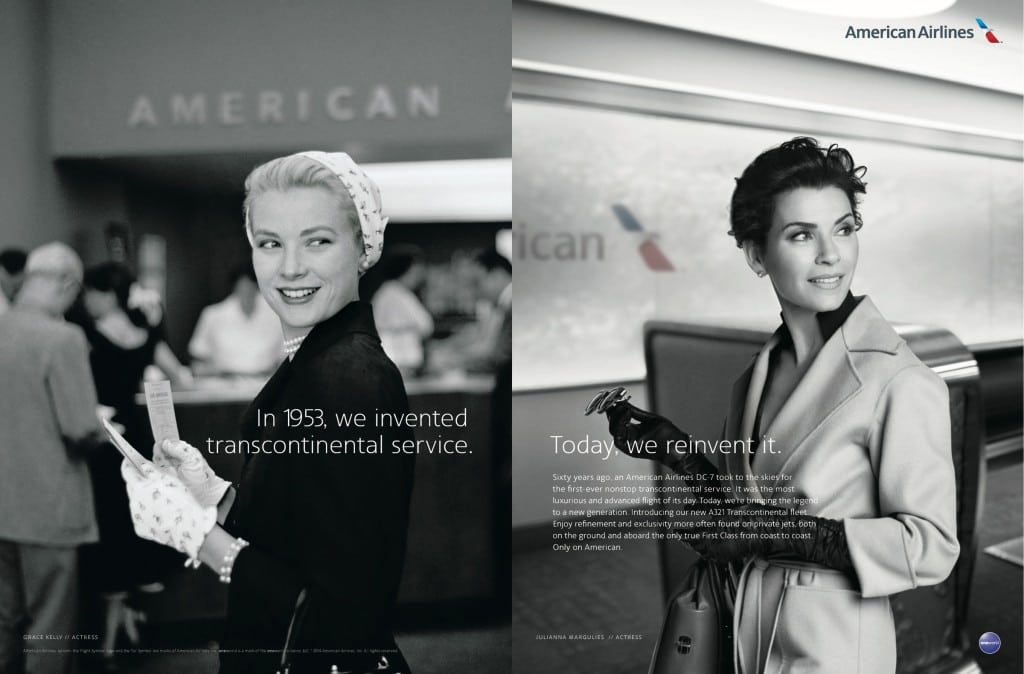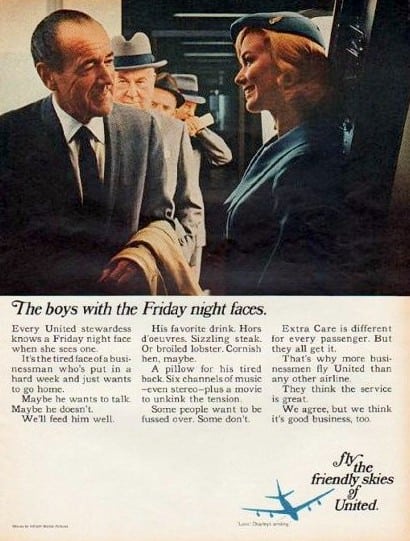Skift Take
A new approach to loyalty and innovation is necessary for U.S. carriers to remain viable in the long-term. Because protectionist instincts will only help you for so long.
Several years ago, I struck up a conversation with a United flight attendant on a flight from New York to Los Angeles.
We were talking a bit about the strange business of U.S. air travel and he remarked that if just the first class cabin of the plane was full with the rest of the plane empty, it would still be a profitable flight.
This is quite telling.
Over the past several years Delta Air Lines, American Airlines, and United Airlines have invested heavily in improving their business and first class products both domestically and on international routes. The storied transcontinental, or “transcon” as referred to in the aviation community, from New York to LA or San Francisco is a virtual arms race of amenities, better seats, better comforters, and better food. It takes up a big percentage of the marketing budget of these airlines and serves as a halo effect for the brand where everything is stress free and comfortable. And when you fly the transcon, you can feel this competition at play.
But this strategy, as much as it makes sense from an economic perspective — follow the money — actually falls quite short on the less tangible but equally important side of the equation: brand, reputation and word-of-mouth. There’s one simple thing that the airlines haven’t yet figured out, despite many of them being fairly astute on how to manage themselves in a world where they don’t control the narrative.
The fact is, most of the plane is economy. And these travelers now have more of a voice then they’ve ever had as the connective tissue of the internet and social media gets more advanced. At the biggest part of the plane where services are being cut to the bone, travelers can fight back en masse.
A lot of times it is annoying: My Twitter feed is full of angry passengers verbally assaulting the 24 year olds manning the front lines of @Deltaassist and @Americanair. It’s everyone from celebrities, top journalists, to your average Joe.
But the fact remains they can share their horror stories of reduced seat pitch, surly flight attendants who have to deal with increasingly irate passengers, bag fees, and being charged for a snack on a 12 hour flight, in real-time.
These are all little chips, dings, and scuffs on a brand, being delivered on a minute-by-minute basis.
But the irony is, many of these airlines are still running old school advertising touting how incredible and friendly an experience their airline is. As if nothing has changed from the glory days of United using those elegant notes of “Rhapsody in Blue” and an experience that still had dignity.
I nearly spit out my coffee when I first saw United rolling out a new riff on the Leo Burnett “Fly the Friendly Skies” advertising of old, dubbed: “Flyer Friendly.”
It is so flat-out wrong that it amounts to doublethink. Ask anyone around you what they think of United and see if that jives with anywhere near the idea of “friendly skies.”
Other campaigns, like American’s, focus on the “glory days” of flying. Black and white, elegant photos of those storied days of air travel. Nostalgia is a convenient fallback when the present isn’t so cut and dry.
In fairness to the U.S. carriers, they are trying to improve some of the so-called hard product. Another American ad campaign touts all of its new planes (many of which are still rolling out) with improved cabin experiences.
And some of the improvements are large upgrades from what was there. In American’s case, flying new A321s instead of old, lumbering 767’s from New York to LA. There’s little things, like seat back videos and power plugs, things that have been long standard on carriers outside of the US. But still, it is unquestionably an improvement for the average U.S. consumer.
These ad campaigns come with big, multi-million dollar spends per year. But, what if in some alternate reality, some of the hyperbole and top-down advertising was used to bring back little touches of empathy back into the overall experience?
These could include:
- Not cramming yet another row into already overcrowded cabins.
- Not charging for a first bag and wondering why people unnecessarily bunch up to fight for space for their carry on.
- Not nickel and diming for food and drink on longer flights, like Hawaii to New York.
- Gutting loyalty programs, especially at the higher tiers.
Fiscally impossible? Maybe. But, it is the little things — customer service, small flourishes and gestures of kindness — that add up to real loyalty in ways that points schemes do not.
And, why not take a page out of Uber’s playbook: allow ratings for flights (and even passengers) alike. Had a great flight, give instant feedback on the app. Harass a flight attendant, be rude and unreasonable, or drunkenly meander around the cabin? That’s going to cost you on your passenger rating tied to your frequent flier account. Watch how quickly behavior would change.
Perhaps most importantly, make it easy for passengers to recognize and appreciate flight attendants that go above and beyond the normal service to elevate the standard. It happens a lot and should be recognized as such.
American still uses an antiquated paper ticket system they give to frequent fliers to recognize great members of staff. And these tickets can be redeemed for, wait for it, a raffle drawing. If I go out of my way to really recognize a great employee that has made my flight better, this doesn’t seem like a great payoff for them.
With this scenario, the most recognized flight attendants could be able to fly on in-demand (and high revenue) longer haul routes to key cities. Where the current criteria is how long you’ve worked for the airline.
I can just see the marketing and comms departments of the US carriers as they read this. “This guy has no understanding of the operational and labor complexities of running an airline!” That may be so. And I know it is an incredibly difficult and complicated business.
But I know many other airlines are doing it better than American, Delta, and United.
And there’s plenty of other innovation coming in other sectors — transportation for one— that makes me think some of this isn’t just a pipe dream. Plus, as I highlighted above, you guys get to say whatever you want in your advertising.
These little ideas and desire for constant improvement and optimization must be celebrated if we have any hope of improving the current state of the skies. And, when you think about it, they really aren’t pipe dreams in a world where we’re endeavoring to put a spaceship on Mars, or building cars that drive themselves.
Colin Nagy (@CJN) is executive director at The Barbarian Group.
The Daily Newsletter
Our daily coverage of the global travel industry. Written by editors and analysts from across Skift’s brands.
Have a confidential tip for Skift? Get in touch
Tags: american airlines, delta air lines, united airlines
Photo credit: A recent ad campaign from American Airlines. American Airlines

